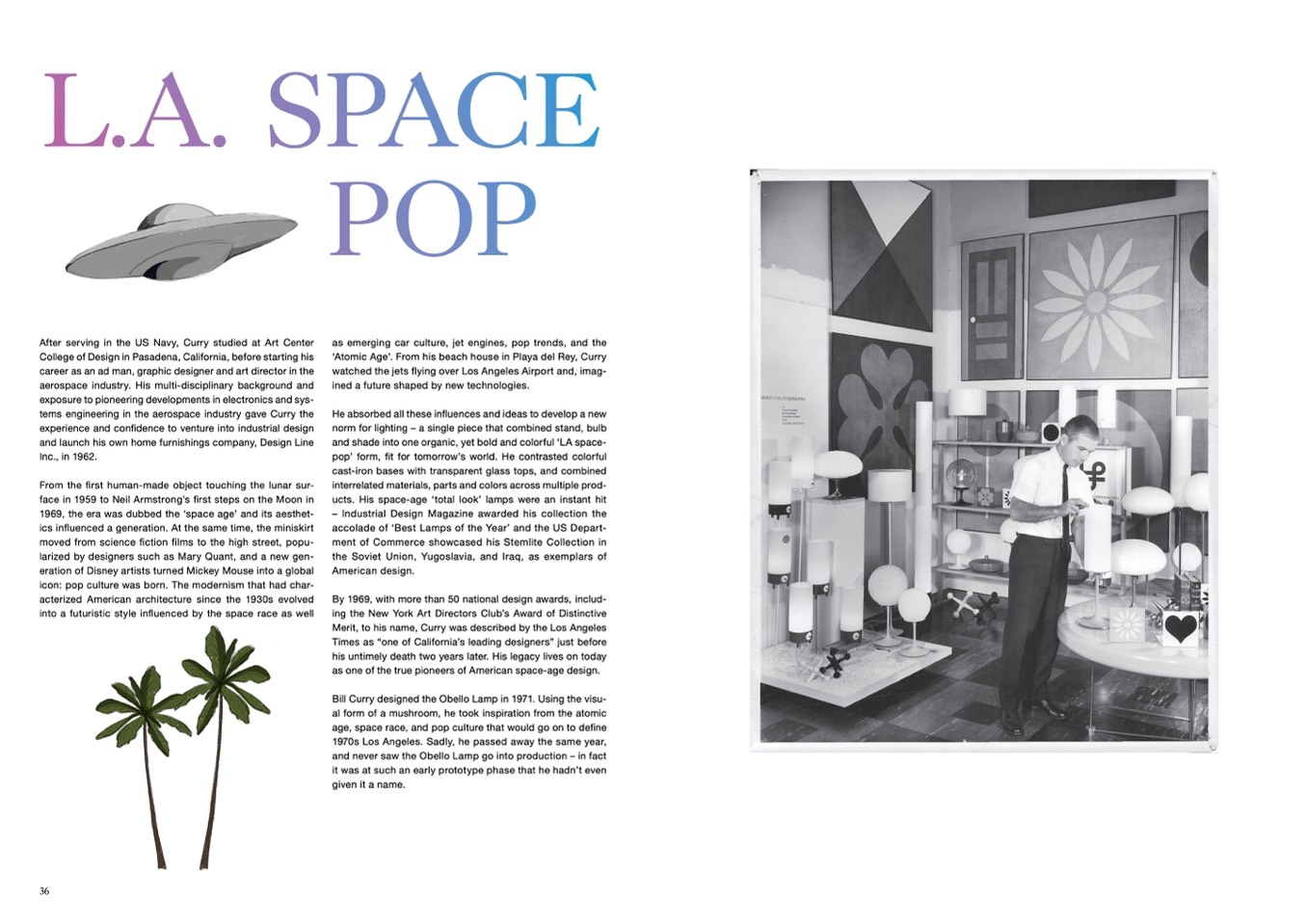
L.A. SPACE
POP
as emerging car culture, jet engines, pop trends, and the
‘Atomic Age’. From his beach house in Playa del Rey, Curry
watched the jets flying over Los Angeles Airport and, imag-
ined a future shaped by new technologies.
He absorbed all these influences and ideas to develop a new
norm for lighting – a single piece that combined stand, bulb
and shade into one organic, yet bold and colorful ‘LA space-
pop’ form, fit for tomorrow’s world. He contrasted colorful
cast-iron bases with transparent glass tops, and combined
interrelated materials, parts and colors across multiple prod-
ucts. His space-age ‘total look’ lamps were an instant hit
– Industrial Design Magazine awarded his collection the
accolade of ‘Best Lamps of the Year’ and the US Depart-
ment of Commerce showcased his Stemlite Collection in
the Soviet Union, Yugoslavia, and Iraq, as exemplars of
American design.
By 1969, with more than 50 national design awards, includ-
ing the New York Art Directors Club’s Award of Distinctive
Merit, to his name, Curry was described by the Los Angeles
Times as “one of California’s leading designers” just before
his untimely death two years later. His legacy lives on today
as one of the true pioneers of American space-age design.
Bill Curry designed the Obello Lamp in 1971. Using the visu-
al form of a mushroom, he took inspiration from the atomic
age, space race, and pop culture that would go on to define
1970s Los Angeles. Sadly, he passed away the same year,
and never saw the Obello Lamp go into production – in fact
it was at such an early prototype phase that he hadn’t even
given it a name.
After serving in the US Navy, Curry studied at Art Center
College of Design in Pasadena, California, before starting his
career as an ad man, graphic designer and art director in the
aerospace industry. His multi-disciplinary background and
exposure to pioneering developments in electronics and sys-
tems engineering in the aerospace industry gave Curry the
experience and confidence to venture into industrial design
and launch his own home furnishings company, Design Line
Inc., in 1962.
From the first human-made object touching the lunar sur-
face in 1959 to Neil Armstrong’s first steps on the Moon in
1969, the era was dubbed the ‘space age’ and its aesthet-
ics influenced a generation. At the same time, the miniskirt
moved from science fiction films to the high street, popu-
larized by designers such as Mary Quant, and a new gen-
eration of Disney artists turned Mickey Mouse into a global
icon: pop culture was born. The modernism that had char-
acterized American architecture since the 1930s evolved
into a futuristic style influenced by the space race as well
36

